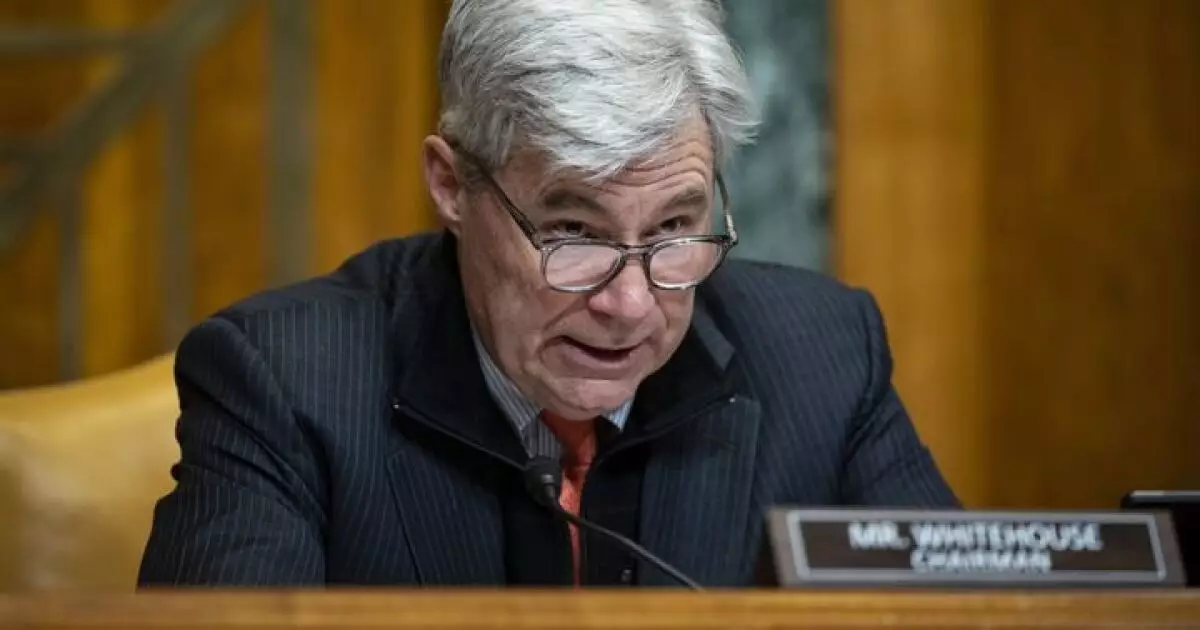The federal funding landscape for infrastructure projects in the United States is facing significant uncertainty, largely due to an ill-timed freeze on federal reimbursements that saw a swift reversal by the White House. As various stakeholders, including lawmakers and transportation officials, navigate this tumultuous situation, vital infrastructure projects are left hanging in the balance. The subject raises questions not just about policy adherence but about the broader implications of political maneuvering in federal funding.
Concerns over the federal government’s funding approach were palpable during a recent American Association of State Highway and Transportation Officials (AASHTO) conference, where Senator Sheldon Whitehouse expressed considerable frustration at the political implications of the freeze. His remarks underscore a critical point: the importance of upholding the laws agreed upon by a bipartisan Congress. There’s a palpable atmosphere of confusion that emerges when changes to funding mechanisms stem from executive decisions that seem arbitrary rather than grounded in the law. The apprehension isn’t unfounded, especially considering that these delays can halt ongoing infrastructure projects vital to communities across the nation.
The rescinded freeze is far from the end of the story; stakeholders in the transportation sector are still grappling with the aftermath of the situation. The initial freeze ignited a lawsuit involving 22 states and forced clarifying statements from the Office of Management and Budget. This series of events highlighted vulnerabilities within the funding system and the geopolitical complexities that can rock state-level infrastructure agendas.
Adding to the complexity of the situation, funding from the Bipartisan Infrastructure Law is set to expire by September 2026, leaving lawmakers to grapple with how best to sustain funding for essential projects. There’s a clear distinction between the need for a comprehensive infrastructure reauthorization that includes not only roads but also airports and broadband, versus a more traditional approach focused primarily on surface transportation. The latter, as Joung Lee from AASHTO conveys, should ideally serve as the foundation for any future policy decisions.
As discussions move forward, transportation officials at the state and local levels seem keen on enhancing formula funding instead of relying on discretionary grants, which tend to involve long, convoluted processes. Garrett Eucalitto, AASHTO president, articulated a frustration shared by many: the arduous process of acquiring grants detracts from the time and resources that could instead be used to accelerate infrastructure enhancements on the ground.
Interestingly, this opinion finds resonance even among certain Republican lawmakers. Senator Shelley Moore Capito called for a systemic overhaul, advocating for the streamlining of funding to allow state governors and legislators the autonomy to make funding decisions conducive to their communities’ needs.
Compounding challenges in the funding landscape is the looming crisis of the Highway Trust Fund, which is projected to be depleted by 2027 without legislative intervention. The major transition towards electric vehicles (EVs) poses a critical problem; as more drivers shift to this new mode of transportation, traditional fuel tax revenues—vital for maintaining infrastructure—will dwindle.
This has already led the Department of Transportation under Secretary Sean Duffey to rethink policies surrounding Corporate Average Fuel Economy standards. While aiming to relax these standards on his first day in office, Duffey’s arguments highlight a clash between environmental priorities and economic realities. His stance, along with statements from other policymakers, implies that EV mandates might soon undergo significant reconsideration, potentially impacting all related regulations, including future transportation funding structures.
As the federal government grapples with these overarching issues, individual states are taking the initiative to plug budgetary gaps created by the rise of electric vehicles. Many have implemented localized fees and registration surcharges specifically targeting EVs to ensure that they contribute fairly to infrastructure funding. Nonetheless, this lack of a cohesive national approach leaves a fragmented system that might inhibit effective long-term solutions.
The uncertainty stemming from the federal funding freeze and subsequent political responses highlights critical vulnerabilities in America’s infrastructure financing system. It raises substantial concerns about the efficacy of policies that directly impact the lives of citizens—issues of funding, environmental standards, and legislative integrity intertwine in a way that could dictate the infrastructure narrative for years to come. Moving forward, it is essential for bipartisan cooperation to prevail in navigating these complexities in order to ensure robust support for the nation’s infrastructure.

